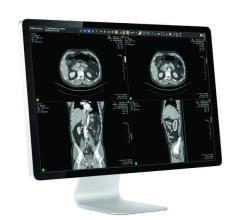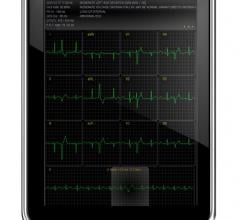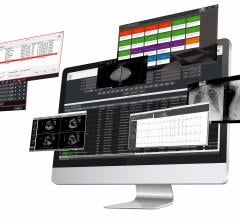Only a few years ago, separate software systems without a common interface were the industry standard to manage electrocardiograms (ECGs), hemodynamic monitoring systems in the cath lab, picture archiving and communications systems (PACS), electrophysiology, cardiac ultrasound and other areas of cardiac specialty.
“They all used separate silos that did not talk to each other and they all used a separate workstation,” explained Rik Primo, director of marketing and strategic relationships, image and knowledge management, Siemens Healthcare.
However, over the past five to six years, Primo said all of these cardiology data sources have been consolidated into one IT system. These unified systems are referred to as cardiology PACS (CPACS), cardiovascular information systems (CVIS) or cardiology image and information management systems (CIIMS). They allow all the cardiology department data to be stored in one location and make it accessible on any Web-enabled computer. For physicians who work between two or more hospitals, these newer systems have greatly simplified access to images and reports, and allow them to work from any location, rather than needing to store work on memory sticks or CDs.
“It’s the end of the ‘best of breed’ individual modality systems – it’s just not efficient,” said James Poehlmann, marketing manager, Fujifilm Medical Systems. He agrees all CVIS are migrating to enterprise-wide systems. Hospitals can now purchase a central cardiology PACS and then attach various add-on modules for additional modalities, such as echo, ECG, CT, nuclear, advanced visualization, hemodynamics, etc.
Other Trends in CVIS
Over the past six years there has been a movement away from dictation toward structured reporting. The advantage is that all terms and definitions are consistent from patient to patient, allowing data to be mined for specific information. The data might be used to assess staff workflow efficiencies, examine which treatment options offer the best outcomes, or for future studies of specific patient populations or disease states years after the data is collected. The increasing need to efficiently collect and send large amounts of data to a growing number of clinical registries is also prompting adoption.
“I think the biggest trend is an increased adoption of structured reporting, which is being driven by additional registry requirements,” said Robert Baumgartner, RN, director of product marketing for medical imaging, McKesson Provider Technologies.
He also sees other trends in the market. There has been an increased push to integrate electrocardiogram (ECG) waveform and reporting management into CVIS. Baumgartner has seen a push to integrate or link radiology PACS into the CVIS, since many hospitals do not have separate/designated magnetic resonance (MR), computed tomography (CT) or nuclear imaging systems for cardiology. The price for CVIS is also dropping. As competition between numerous vendors entering the CVIS market has heated up over the past few years, in addition to the lack of funding due to the economy, Baumgartner said there is negative pressure on the market to reduce the cost of these systems.
Another major trend is connecting CVIS images and information with smart phones and iPads. Many vendors are introducing or developing interfaces with these devices.
Clinical decision support software is another trend entering CVIS. The software is supposed to act as a second set of eyes on clinical data as it’s entered. These systems draw clinical knowledge from an up-to-date evidence-based medicine database. Such systems can determine what information or diagnosis should be considered based on the ICD-9 codes entered into the patient’s report. It can red-flag values out of normal ranges or offer suggestions for a possible diagnosis or additional tests or images needed to confirm a diagnosis.
Workflow Efficiencies a Key Differentiator
Workflow efficiencies are the primary differentiators between CVIS systems. These features might include touch screen and bar code data entry versus manual keyboard data entry, structured reporting over dictation or fewer clicks to accomplish a task. Other features might include interactive whiteboards and software to help speed data migration to registries.
Ensure the System Meets All Users’ Needs
In the cath lab, it is important to determine which subspecialties are using the lab and if the CVIS being considered offers those modules. Many cardiovascular cath labs are shared by electrophysiology, neurology, interventional radiology and vascular surgeons performing peripheral cases. Hybrid operating rooms may add several more specialties, including pediatric and adult structural heart and endovascular aortic repair.
“We are starting to see a lot more vascular procedures and more interventional radiology in the cath lab,” said Lee Harrop, director of cardiology product management, Merge Healthcare.
Baumgartner said CVIS are being expanded to include additional areas of cardiology, including electrophysiology, heart failure and cardiac ultrasound, image and report management.
Comparison Chart
This article served as an introduction for a comparison chart of cardiology department information systems used to enter, store and disseminate images and patient reports. These systems are referred to as cardiology PACS (CPACS), cardiovascular information systems (CVIS) and cardiology image and information management systems (CIIMS). The most recent PACS/CVIS chart can be accessed at www.dicardiology.net/comparison-charts?t=PACS/CVIS%20-%20Cardiology
Participants included:
Agfa Healthcare
www.agfahealthcare.com/usa/en/main/solutions/cardiology/index.jsp
Carestream Health
http://cardiopacs.carestreamhealth.com
Digisonics
www.digisonics.com
DR Systems
www.drsys.com
Fujifilm Medical Systems USA
http://fujifilmusa.com/products/medical/index.html
GE Healthcare
www.gehealthcare.com
Infinitt North America
infinittna.com
Lumedx Corp.
www.lumedx.com
McKesson Provider Technologies
www.mckesson.com/cardiology
Merge Healthcare
www.merge.com
Novarad Corp.
www.novarad.net
Philips
www.healthcare.philips.com/us
ScImage Inc.
www.scimage.com
Siemens Healthcare
www.usa.siemens.com/CardIT


 March 06, 2024
March 06, 2024 




